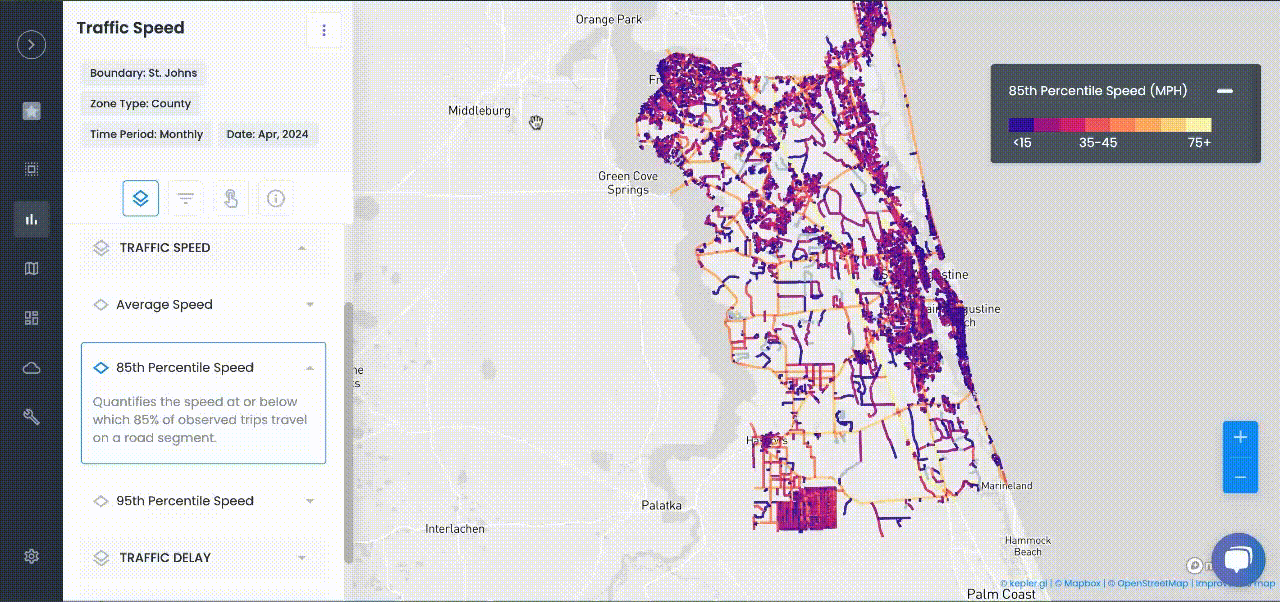
Traffic Calming
Allegheny County Enlists Urban SDK to Help Manage Transportation Issues
Allegheny County enlists Urban SDK in its effort to utilize technology, automation, and AI to address and manage transportation issues
Allegheny County enlists Urban SDK in its effort to utilize technology, automation, and AI to solve, address or manage typical transportation issues.
Urban SDK Partners with Allegheny
Urban SDK, a pioneer in smart city technology, is excited to announce its collaboration with Allegheny County, Pennsylvania. The strategic partnership aims to address and manage transportation issues through data-driven solutions, reinforcing Allegheny County's commitment to enhancing mobility, safety, and efficiency within the region.
As one of Pennsylvania's bellwether counties, Allegheny has sought out solutions that add or utilize technology and automation to solve, address, or manage typical transportation issues. In partnering with Urban SDK, officials will have a holistic view of speeds on all roads across the county in Functional Class 1-5, as well as volumes on roadways throughout the county.
"We are very happy to kick off our work with the County," said Urban SDK's Ross Loehr. "The organization has done a tremendous job of addressing maintenance repairs, preservation, rehabilitation and replacements. We're excited to help officials stretch their dollars further by using data to drive capital budget projects."
Urban SDK's traffic management software will enable Allegheny officials to monitor roadway conditions year-round, delivering a comprehensive state of the roadway that will help officials as they collaborate on a variety of project with the region's MPO and Cities, as well as PennDOT and the FHWA.
About Urban SDK
Urban SDK provides State and Local Governments with a transportation system of record to monitor roadways and act more efficiently. Our software delivers speed and safety data on all local roadways, which helps officials quickly respond to public concerns, diagnose and prioritize at-risk roadways, measure the effectiveness of traffic calming initiatives, and then share their findings with citizens and councilmembers.

TRAFFIC ENFORCEMENT FEATURES
80% of citizen complaints
are a perception problem
Urban SDK provides precise hourly speed data to evaluate complaints and deploy resources efficiently for the greatest impact to public safety.
Urban SDK provides precise hourly speed data to evaluate complaints and deploy resources efficiently for the greatest impact to public safety.
Target Speeding
Identify hot spots, validate monthly speeding trends and monitor vulnerable areas like school zones.
Improve Safety
Crash and citations location information to compare speed trends month over month
Fast Response
Respond to citizen complaints sooner with address search and exportable reporting
Deploy Assets
Generate maps for traffic enforcement by time of day, location or division to deploy officers to known problem areas.
RESOURCES
Customer Success
See how public sector leaders succeed with Urban SDK.
WEBINAR
Identify speeding and proactively enforce issues
See just how quick and easy it is to identify speeding, address complaints, and deploy officers.







